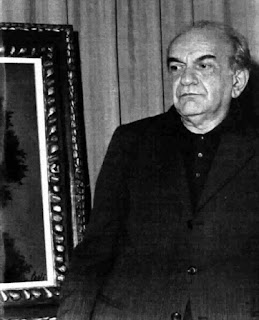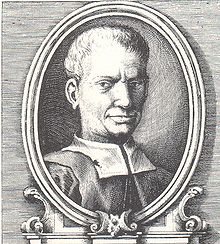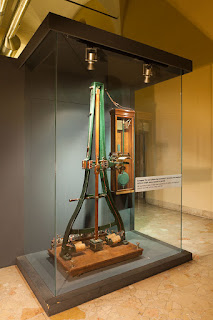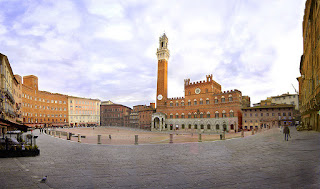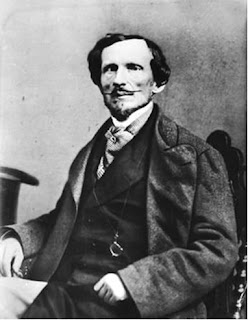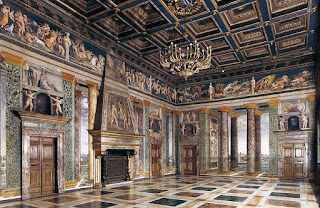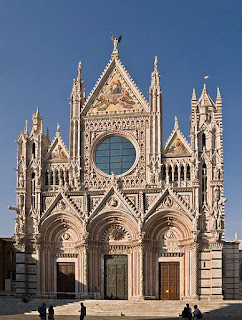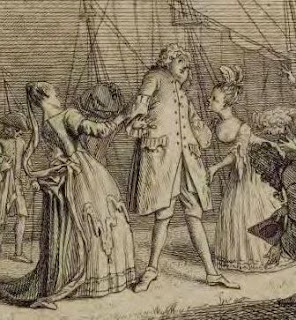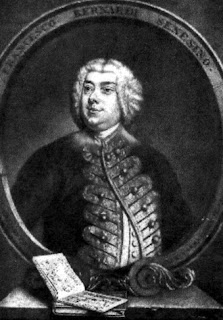Work helped end the dominance of Neoclassicism
 |
| Giovanni Dupré, painted by the Swiss-Italian artist Antonio Ciseri |
Like his contemporary, Lorenzo Bartolini, Dupré went back to the Renaissance for inspiration and his success helped Italian sculpture move on from the dominance of Antonio Canova, whose brilliant work in the Neoclassicist style had spawned a generation of imitators.
Dupré did much of his work in Florence and Siena, his greatest piece generally judged to be the Pietà he carved between 1860 and 1865 for the family tomb of the Marchese Bichi-Ruspoli in the cemetery of the Misericordia in Siena.
Although his family were of French descent, they were long established in Tuscany when Giovanni was born. The street in the Contrada Capitana dell'Onda where the family lived, a few steps away from Piazza del Campo, subsequently saw its name changed to Via Giovanni Dupré.
As a young man working in the workshops of his father and of another sculptor, Paolo Sani, he became familiar with the work of Renaissance sculptors, carving copies of the great works, for which there was some demand among wealthy Sienese and was the basis of a thriving family business.
He began to make a name for himself after moving to Florence and winning a competition run by the Accademia di Belle Arti with a Judgment of Paris.
 |
| Dupré's Pietà for the family tomb of the Marchese Bichi-Ruspoli is seen as his finest work |
Bartolini made a point of encouraging Dupré to be aware of his talent and to continue. He followed his Abel with a Cain, the marble version of which is also in the Hermitage Museum with a bronze in the Pitti.
Also in Florence, commissions followed for statues of Giotto and St Antoninus for the Loggiato degli Uffizi and a Triumph of the Cross lunette above the main entrance of the Basilica di Santa Croce.
Despite a period of ill health, Dupré worked prolifically. His sculptures included a representation of the Greek poet Sappho which was reminiscent of Michelangelo, which is now in the Galleria Nazionale d'Arte Moderna in Rome, the bronze base for a grand table in the Sala del Castagnoli at the Palazzo Pitti, a funeral monument for contessa Berta Moltke Ferrari-Corbelli in the Basilica of San Lorenzo in Florence and a Madonna Addolorata for Santa Croce.
 |
| The startlingly realistic Dying Abel brought the young Dupré his first major success |
Other notable works included busts of prominent figures such as Letizia Cristina Bonaparte, niece of Napoleon, a San Zanobi for the façade of the Duomo di Siena, the huge allegories of the Cavour monument in Turin and a bronze bust of Savonarola at the monastery of San Marco, Florence.
After his death in 1882 at the age of 64, Dupré’s last work, a depiction of St. Francis inside the Cattedrale di San Rufino in Assisi, was finished by his daughter, Amalia, who was also his pupil.
Despite a steady workload, Dupré managed to write a book, Pensieri sull'arte e ricordi autobiografici - Thoughts on Art and Autobiographical Memories - which was translated into English in 1882 and republished in 1935.
 |
| The beautiful Piazza del Campo in Siena is regarded as one of the finest mediaeval squares in Europe |
Dupré’s family home growing up was just a short distance from Siena’s Piazza del Campo, the shell-shaped square that originated in the 13th century as an open marketplace on a sloping site between the three communities that eventually merged to form Siena. It is regarded as one of Europe's finest mediaeval squares, looked over by the Palazzo Pubblico - also known as the Palazzo Comunale - and the Torre del Mangia. Via Giovanni Dupré opens on to the piazza alongside the Palazzo Pubblico. The building where his family lived is indicated by a plaque, placed above the main entrance of the building. Piazza del Campo is well known also as the venue for the twice-yearly Palio di Siene horse race.
.jpg) |
| The inner courtyard and the Loggiato, which links the two palaces of the Uffizi Gallery complex |
What is now the Uffizi Gallery in Florence, one of the world’s most famous art galleries, was originally built to accommodate the offices of the Florentine magistrates, hence the name uffizi (offices). It was Cosimo I de' Medici, the Grand Duke of Tuscany who commissioned the building, who gave it its parallel identity as an art gallery, displaying prime artworks of the Medici collections. Over the years, more sections of the palace were chosen to exhibit paintings and sculpture collected or commissioned by the Medici. It was officially opened to the public as an art gallery in 1765. The Uffizi complex, which consists of two palaces alongside the Arno river linked by the Loggiato and a semi-enclosed courtyard, was designed by Giorgio Vasari.
Also on this day:
1773: The death of architect Luigi Vanvitelli
1869: The birth of sculptor Pietro Canonica
1926: The birth of actor Cesare Danova
1930: The birth of cycling champion Gastone Nencini
(Picture credits: Pieta by Sailko via Wikimedia Commons; Piazza del Campo by Gerhard Bögner from Pixabay)





